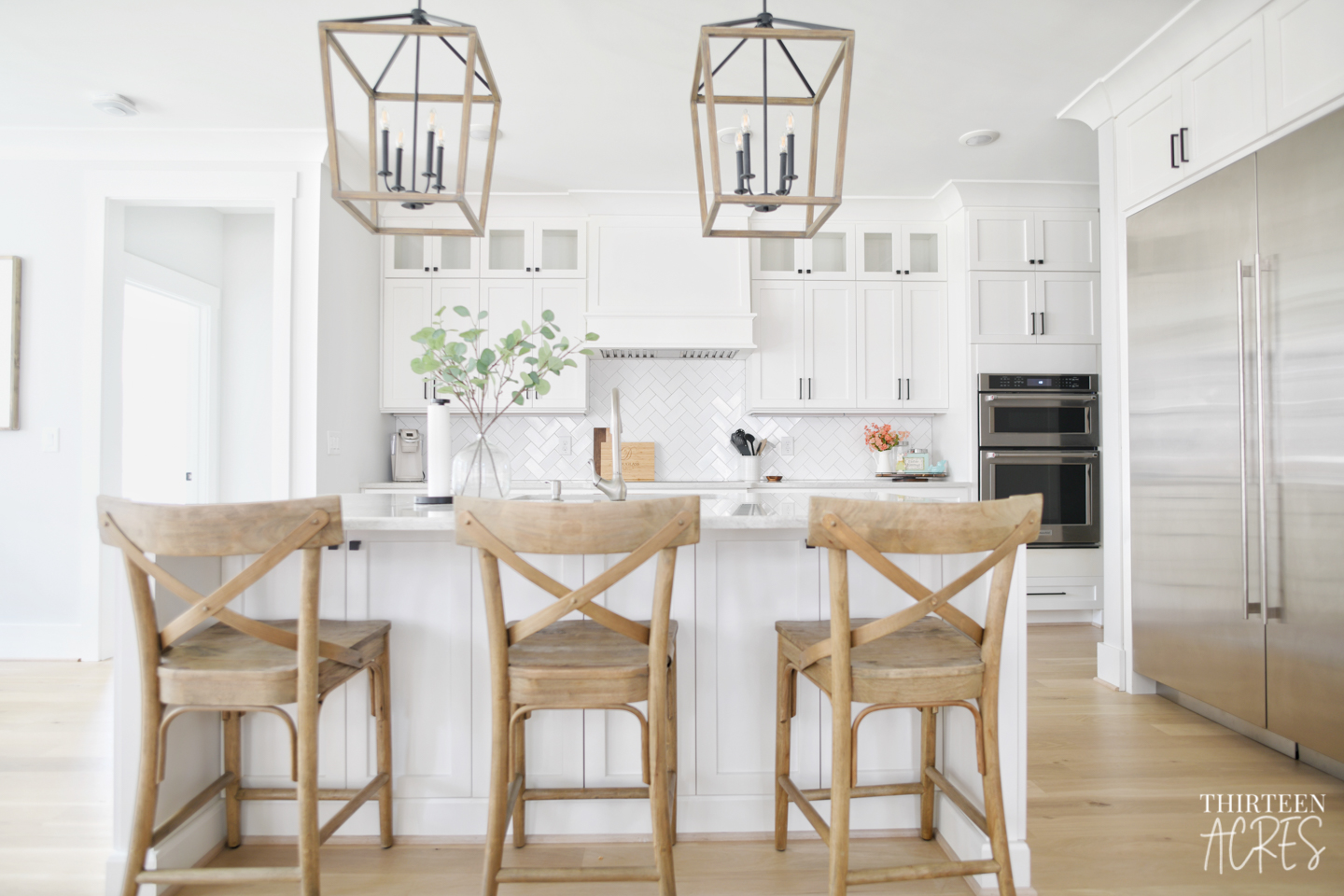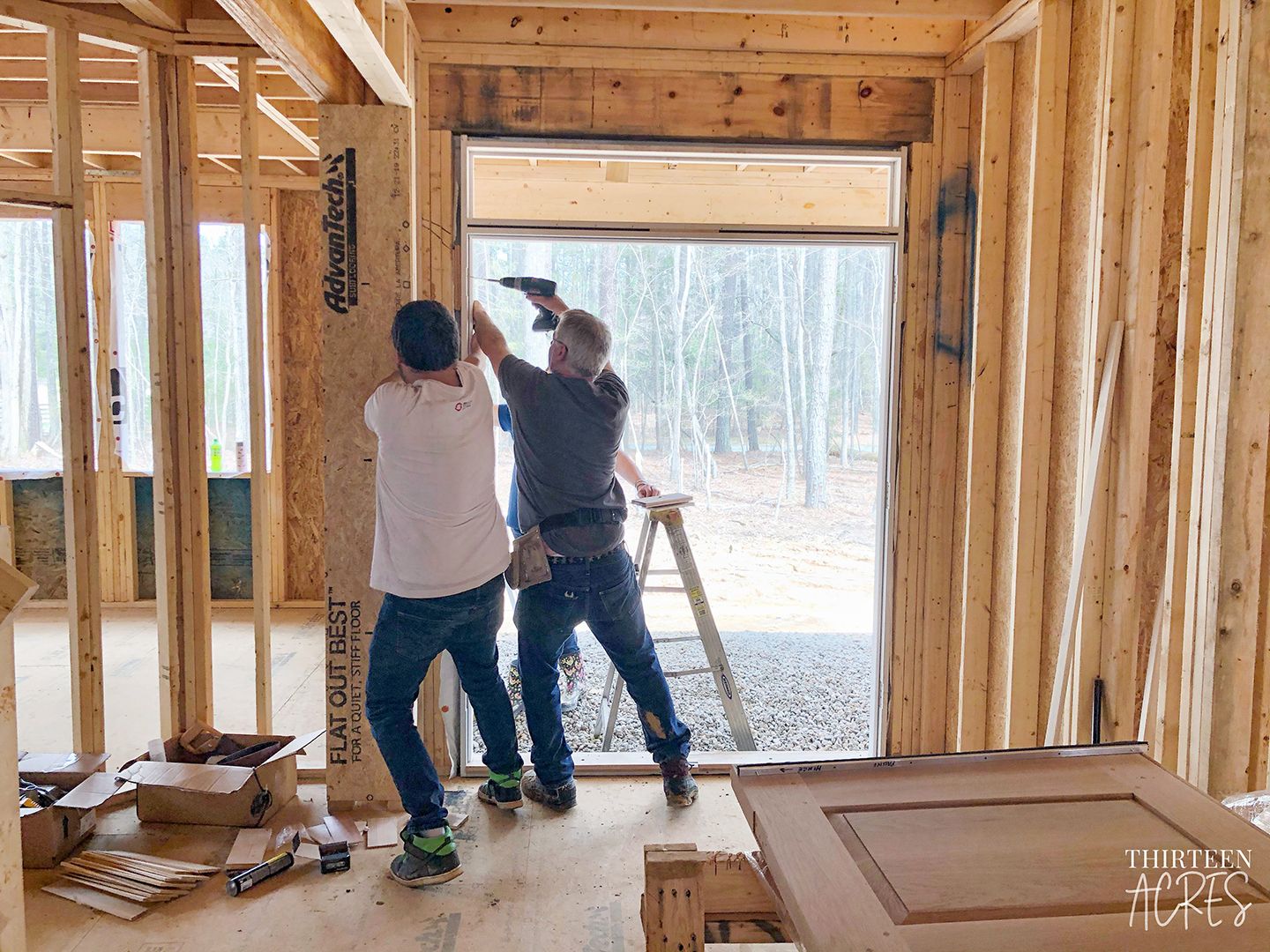Thirteen Acres is supported by our readers. When you buy through links on our site, we may earn an affiliate commission. As an Amazon Associate, we earn from qualifying purchases.
Building a home can be expensive! But there are a number of ways and different areas where you can certainly save some money. In my opinion, if you're planning to build the home of your dreams, it's important to get what you want. Don't get me wrong, I definitely don't think you should spend above your means and become house-poor. If it means waiting a few more months or a year (or even more) to save up and get what you want, I think you'll be happy you did. One of the easiest ways to save is to allocate more money to things that are harder to change later, like the size and layout, while reducing cost on things that are less permanent, like finishes. We'll go over some things we did to save while building to help point you in the right direction.
Source your own finishes
Lighting, faucets, appliances, etc. – use coupons and watch for sales. While we were building our home, we sourced all of our door knobs for the entire house when there was a sale, so we saved quite a bit there. Of course, check with your builder prior to doing this. Some builders require you to work with their vendors, while others will let you source your own items, but keep in mind that the builder's warranty may not cover the items you source yourself. You'll also want to make sure that you and your builder communicate well regarding the timeline so there are no delays between when you provide the items and when the builder needs them.
Alternatively, if your builder isn't as open to you providing your own finishes, you could also go with the cheapest "default" option that your builder provides and update it yourself later. A lot of larger, production-style builders charge an arm and a leg for upgraded finishes, but you can easily replace them yourself later on for significantly less.

Leave spaces unfinished
Whether you can finish spaces yourself later on, or just want to save up and pay someone else to finish them, leaving spaces unfinished can save you some money upfront. Just be sure to talk this over with your builder to ensure that leaving certain spaces unfinished won't cause any issues with your build. Since we didn't have kids yet and didn't need the extra space, we left a full upstairs bedroom and bathroom unfinished. The builder was able to still rough in for the plumbing and electrical, but we can spend the money on finishes (drywall, flooring, lighting, etc.) when we need it. In the meantime, we use it as walk-in storage.
One reason you should make sure to discuss this with your builder during the early stages is that they can provide useful information that may direct your decision one way or another. We had considered leaving our bonus room above the garage unfinished, but our builder explained how difficult it was going to be to get HVAC up there after our build was complete. We knew we eventually wanted that to be usable, so we ultimately decided to factor that in and plan to finish the space.

Build a "normal" house
The reason so many houses look the same now is because it makes sense. You're going to get the most bang for your buck if you build in a normal square or rectangle shape box. Not only is it more practical from a building perspective, but it's also less likely to waste space and more efficient to heat and cool, so it will save you money on the back end too. Things like our angled garage added additional cost, and may not be the best use of space, but it was a trade-off that we were willing to accept because we really liked the unique look it gives our home.
Another thing to note here is that building up is going to be cheaper than building out. A ranch-style home is going to be more expensive per square foot because it requires a larger foundation. Similarly, building up is cheaper than building down. Scott really wanted a basement in our home, but besides being somewhat impractical in North Carolina soil, it was also outside our budget. We were still able to get the square footage we were looking for by putting rooms on the second floor instead of putting them in a basement.
Build in stages
In the early planning stages of our build, we looked into and talked to some people that suggested building our home in phases to help us control the initial budget. Ultimately, we didn't follow this path, but it could be an option - especially if building a simpler design is what you're looking for. This method requires significant up-front planning because it essentially involves building the house in a way that you can attach a second, third, fourth – however many you plan out for – section of house to the first stage of your home.
In the long run, this probably doesn't save any money. In fact, it probably costs more because there is going to be some waste factor. To get your house completed, you'll need a complete space according to your local building codes, and to add onto that, later on, will likely mean removing walls. However, it may be an option that's available if you're willing to get the up-front planning done and don't mind the hassle to get something closer to your dream home now.

Do some of the work yourself
Doing some of the work yourself will depend entirely on your builder, but it was something that we took advantage of. We weren't involved in doing any of the structural work or anything that would impact our inspections, but we did ask our builder ahead of time about doing certain things. For example, Scott's dad made our front door, and then we installed it with his dad when it was delivered. We spent many weekends during the course of our build doing some low-voltage wiring ourselves for the bonus room and the office. After the build was complete, we built the dog ramp off of the back porch and finished the half bathroom in the bonus room ourselves. We purposely left our main closet barebones, so we could come back and finish it to our liking on our own too.
Depending on your skill level, willingness to learn, or just general pursuit of saving money, you can try and set up your home build in a way that you can do some of the work on your own.
Building a home is certainly not cheap, especially if you go the full custom home route, but there are many ways to cut costs and save money. We hope this list provides you with a few ways to do just that!

Comments